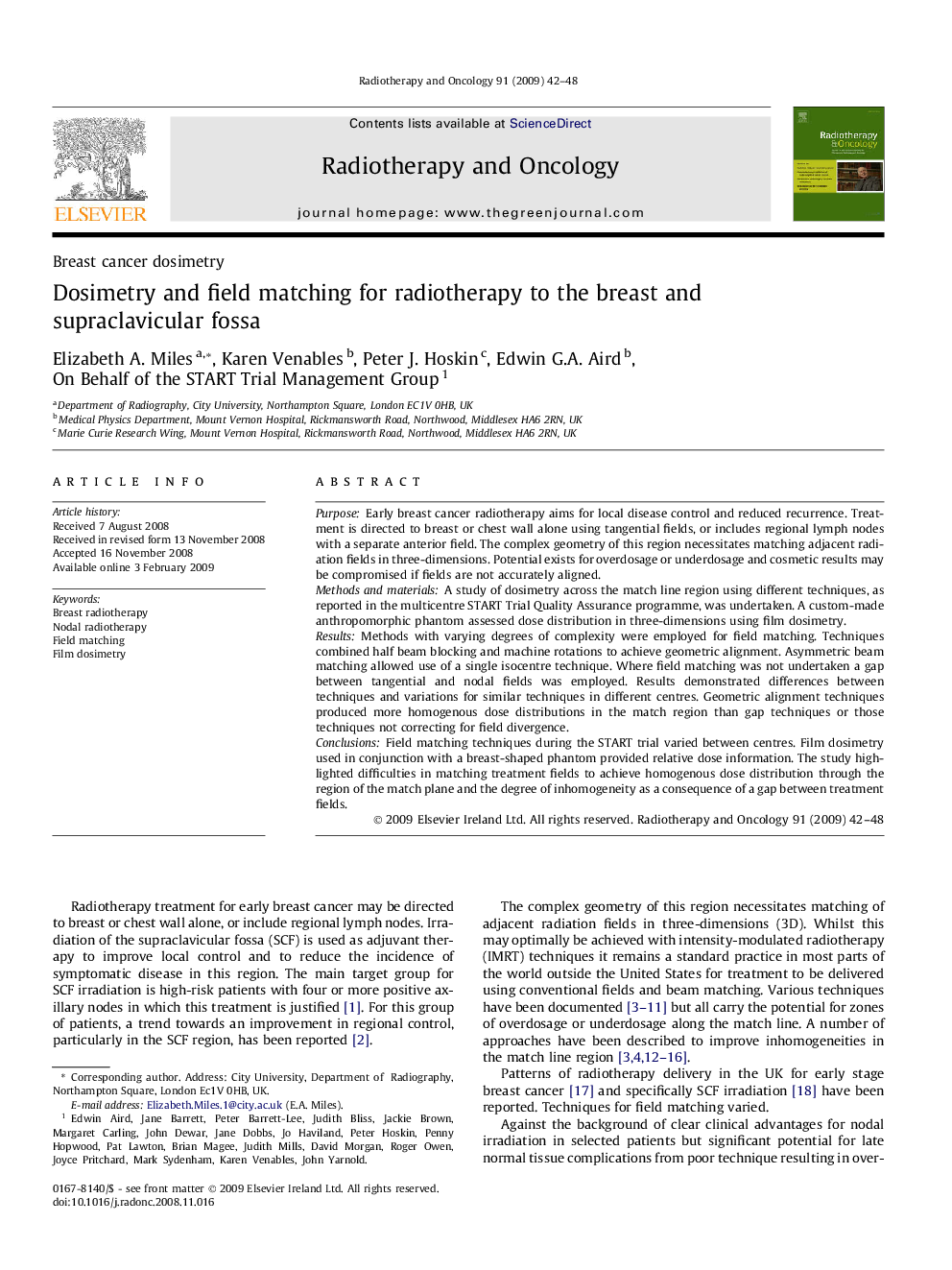| Article ID | Journal | Published Year | Pages | File Type |
|---|---|---|---|---|
| 2159433 | Radiotherapy and Oncology | 2009 | 7 Pages |
PurposeEarly breast cancer radiotherapy aims for local disease control and reduced recurrence. Treatment is directed to breast or chest wall alone using tangential fields, or includes regional lymph nodes with a separate anterior field. The complex geometry of this region necessitates matching adjacent radiation fields in three-dimensions. Potential exists for overdosage or underdosage and cosmetic results may be compromised if fields are not accurately aligned.Methods and materialsA study of dosimetry across the match line region using different techniques, as reported in the multicentre START Trial Quality Assurance programme, was undertaken. A custom-made anthropomorphic phantom assessed dose distribution in three-dimensions using film dosimetry.ResultsMethods with varying degrees of complexity were employed for field matching. Techniques combined half beam blocking and machine rotations to achieve geometric alignment. Asymmetric beam matching allowed use of a single isocentre technique. Where field matching was not undertaken a gap between tangential and nodal fields was employed. Results demonstrated differences between techniques and variations for similar techniques in different centres. Geometric alignment techniques produced more homogenous dose distributions in the match region than gap techniques or those techniques not correcting for field divergence.ConclusionsField matching techniques during the START trial varied between centres. Film dosimetry used in conjunction with a breast-shaped phantom provided relative dose information. The study highlighted difficulties in matching treatment fields to achieve homogenous dose distribution through the region of the match plane and the degree of inhomogeneity as a consequence of a gap between treatment fields.
